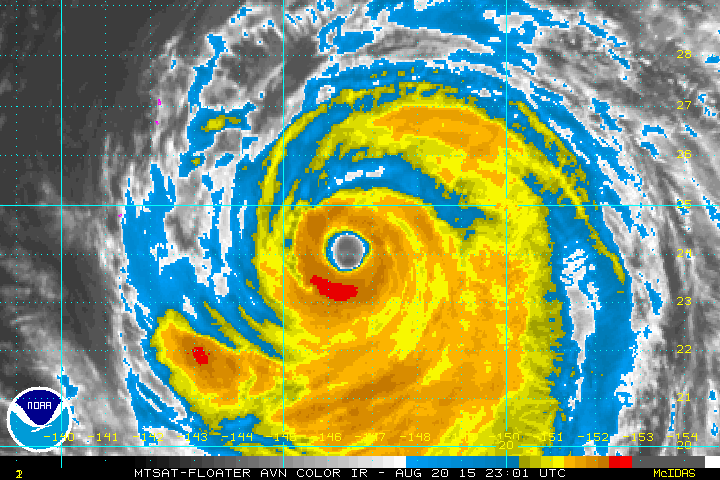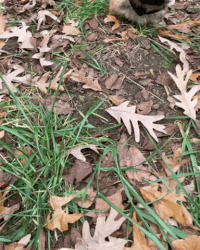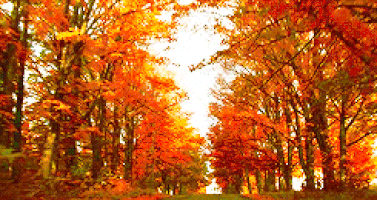Here we are in mid-October and everyone is asking “Where Is Fall?” The last few weeks, we kept expecting a more permanent cooldown that never came. On top of that, it was very dry, bordering on drought until recently.
Recent rainfall from Harvey, Irma, Nate and non-tropical systems have put moisture back into the ground in many areas. This will reduce the spike in temperature during the afternoon hours, as some of the sun’s  energy will be used to evaporate that moisture, rather than heat the ground and air in the lowest part of the atmosphere. So this will help in cooling more than what we were.
energy will be used to evaporate that moisture, rather than heat the ground and air in the lowest part of the atmosphere. So this will help in cooling more than what we were.
The other problem has been the influence of the tropics on our weather patterns. They act as a giant heat generator and causes the cooler air trying to come in to modify and forces the jet stream way north of our region which also bottles up the cooler air. So, a few things have to happen to bring fall weather back to our area. First, the tropics must cool some and release its effects on our pattern. There are trends just now starting to show up that indicate that may be about to happen.
Next, since the days are much shorter now, when compared to August or early September, there is less time for the sun to heat things up. When you factor in more cloudy days, temperatures will tend to be lower as well. The lengthening nights during October will allow temperatures to slip back to 10 to 20 degrees lower than the previous day’s high.  Also a northward bulge in the jet stream persisted over the southeastern half of the nation most of the time through much of the month up to now. The jet stream is a high-speed river of air at the level where jets cruise at. South of the jet stream, temperatures are often warm. The warm weather has delayed the viewing opportunity for the fall foliage in some areas, at least where prior drought or gusty winds and rain from Nate have caused the leaves to fall off in the first place.
Also a northward bulge in the jet stream persisted over the southeastern half of the nation most of the time through much of the month up to now. The jet stream is a high-speed river of air at the level where jets cruise at. South of the jet stream, temperatures are often warm. The warm weather has delayed the viewing opportunity for the fall foliage in some areas, at least where prior drought or gusty winds and rain from Nate have caused the leaves to fall off in the first place.
If the dryness had continued, the leaves would have been more brown and dull than anything. It is hoped the rain has helped to at least salvage some nice color. But it is taking much longer this year for the leaves to change. What leaves really need for a good display during this time is clear sun in the day, with nights that are a bit chilly – but not freezing. The warm sun provides the sugars needed for pigment production, and the cold makes sure the sugars don’t travel far from the leaf. If you’re partial to crimson, you might wonder why nature seems to go overboard with the red some years and forget it entirely during others. The reason involves photosynthesis, pigments and sunlight. To fully understand the chemistry behind the color show, we’ll need to look at the process and those big words we use to describe it.
As summer nears its end and days get shorter, the increased amount of darkness incites trees to prepare for a sort of hibernation. Leaves won’t be able to continue photosynthesizing during winter due to the dry air and lack of sunlight, so the tree does two things. First, it forms a separation layer made of corklike cells at the base of each leaf to seal it off from the tree. Second, it stops producing chlorophyll since it won’t need this pigment until the days start to lengthen once again in the spring. With chlorophyll out of the picture, the yellow and orange pigments  get a chance to shine. The red hues, which come from pigments called anthocyanins, are slightly more complicated. Whereas all trees contain chlorophyll, carotene and xanthophyll, not all of them produce anthocyanins. Even the ones that do have anthocyanins only produce it under certain circumstances.
get a chance to shine. The red hues, which come from pigments called anthocyanins, are slightly more complicated. Whereas all trees contain chlorophyll, carotene and xanthophyll, not all of them produce anthocyanins. Even the ones that do have anthocyanins only produce it under certain circumstances.
Remember that layer of cells at the base of the leaf? Its purpose is to protect the tree during the colder winter and prevent it from drying out. When the separation layer is complete, the leaves fall off in the tree’s attempt to conserve energy. But before the leaves fall off and the tree closes up shop, it wants to pull in as much sugar and nutrients as possible from its leaves, which is where the anthocyanin comes in. The reason you’ll see more vibrant reds during some years is that lots of sunlight and dry weather increase the sugar concentration in tree sap, triggering the tree to release more anthocyanins in a last-ditch effort to gather up energy to get through the winter. If it’s been especially rainy and overcast, you won’t see much red foliage. Without bright sunlight, the trees don’t need the added protection that the red pigments provide, so they don’t bother producing them. So if autumn just isn’t the same for you without the occasional splash of red, I think the weather has cooperated. I don’t think there is any doubt there will be lots of reds this year. Feel free to comment on this post and be sure to hit the “Like” button at the end.






